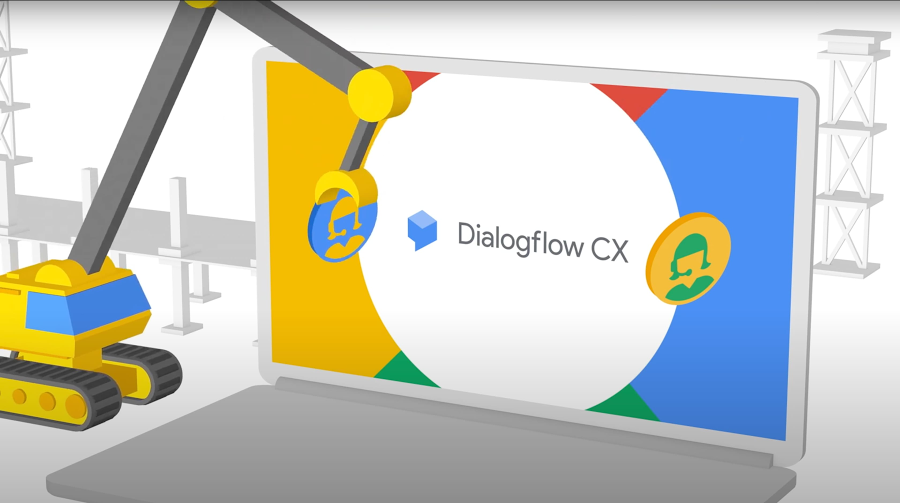A recipe for building a conversational AI team
Yuan Jia
UX Researcher
Shantanu Pai
UX Director, Cloud AI
Contact center virtual agents, such as chatbots or voice bots, leverage the power of artificial intelligence (AI) to help businesses connect with their customers and answer questions round the clock, regardless of request volume. AI tools will only become more critical for streamlining customer experience processes in the future.
Are you convinced about the benefits of conversational AI for your contact center but don’t know where to start?
As UX researchers who are part of the team behind Google Contact Center AI (CCAI), we spend a lot of time with our customers and have a unique perspective on what’s needed to develop and manage virtual agents correctly. Although there is no one-size-fits-all for creating a team, we have discovered six typical roles during our numerous hours of studying contact centers. In this post, we’ll discuss each role and the additional stakeholders that are critical ingredients for getting conversational AI right.
All engineers — the most common pitfall
Before we jump in, let’s quickly discuss why this topic is so important. Too often, we see teams made up of all engineers or a product manager responsible for doing everything. A potential reason for this is that many companies underestimate how hard it is to implement a virtual agent that can interact with a customer appropriately and naturally. More often than not, the flow of conversation becomes too nuanced to interpret.
We even see flow mistakes in simple cases, for example, at the end of a conversation:
User: Goodbye.
Virtual agent: I think you said Goodbye. Do you want to restore the conversation?
User: (What?) [user quits the chat]
This type of misunderstanding often leaves people feeling confused or disappointed with the experience, which is a direct extension of the company. In more severe cases, inadequate attention to virtual agent design can harm your brand credibility or even cause a PR crisis. That’s why we also encourage our customers to build conversational AI from a user-centric perspective—and that requires assembling the right team.
The core roles needed for conversational AI
When building a virtual agent for the first time, you have to create a team with the right blend of skills, striking a balance between engineering, user experience, and data science. Through our own experience, we have identified the following three core roles:
1) Conversational Architect
A Conversational Architect (CA) is an expert at designing conversations. Like an architect designing a house, they create blueprints for the virtual agent to use when interacting with customers. They leverage professional human language skills to bring natural human speech patterns to the human to virtual agent interaction flows. For example, a virtual agent’s language should be supportive in its content, style and tone, as well as use the correct level of formality needed for a specific context. In addition, conversational architects should have a clear understanding of the product requirements and customers’ needs, working with business stakeholders to:
Gather customer requirements
Define use cases
Design a human-to-virtual-agent conversation flow iteratively
Let’s consider a chatbot created for travel booking and managing existing reservations. To design an interaction flow that fits the business logic, legal terms, and domain specifications, it’s necessary to communicate with multiple parties. In this particular case, a CA would be responsible for working with business stakeholders to define the essential details, such as destination, dates, or number of people traveling, needed to create a new booking. Also, CAs often transfer the conversation flow design into a chatbot or a voice bot through a bot creation platform.
2) Bot developer
If a CA designs and manages the conversation between humans and virtual agents, then bot developers are in charge of ensuring that a virtual agent has ability to conduct complex actions, such as checking available dates for available flights. Bot developers are also responsible for supporting service integration and any additional customized UI or IVR (Interactive Voice Response) implementations.
3) Quality Assurance Testers
Due to the nature of the iterative and incremental conversational AI development and maintenance life cycle, another critical role identified from best practices is Quality Assurance (QA) tester. This role is often easily overlooked, especially in the early stages of the development process. Quality assurance testers are responsible for testing conversational AI against pre-defined use cases. Those use cases or scripts are typically created based on the design from the CA or through analysis of the available conversation data. Any breakdowns in a conversation, unexpected user experiences, or mismatched targeted flows will be discovered by QA and reported to the team. QA testers can also identify new cases or problematic flows to assist the CA in refining the conversation design.
The good-to-have roles that support strong conversational AI development
Besides the three core roles, strong conversational AI teams typically include the following good-to-have roles:
Product manager
Copywriter
Data analyst
Product managers help conversational architects define and prioritize use cases, manage the development life cycle, and communicate with multiple teams.
Copywriters come into play after a CA has defined the interaction flow, with one primary purpose—to ensure the virtual agent’s content quality. It’s hard for conversational AI technology to understand human conversations without training data. People often use different expressions to say things, and based on what they say, we can match intent.
In Google Cloud Dialogflow, we call these training phrases—or the different expressions people might use to say things. For example, users might use the expression “Get a pizza” or “Order pizza” for the phrase “I want a pizza.” Our customers often use call center log data or copywriters to help them create and define training phrases.
“Designing the conversation is one piece, but writing the responses is different—copywriters can help think through the persona of a virtual agent.” — Pavel Sirotin, Conversational AI Incubator Manager
It’s critical for creating complex virtual agents with tons of training phrases and responses to have a copywriter on the team managing all the content. For example, if someone says “I want to book a flight to Paris,” a copywriter would have to come up with at least 10 to 15 other expressions that a person might use to say the same thing, including:
“I would like to book a flight to Paris”
“I’d like a flight to Paris”
“I plan to travel to Paris and need to book a flight”
Once a chatbot or voice bot is launched, data analysts can then define and monitor key metrics, analyze failure root causes, and set up A/B testing for experimental features.
Other crucial stakeholders to consider
In addition to the roles that directly contribute to conversational AI development, we also see other stakeholders with varying degrees of involvement. Legal advisors can provide a comprehensive understanding of all regulations needed to define the project scope and use cases. We’ve also seen business advisors from the marketing team review the virtual agent interactions according to the updated business rules and strategies.
To help discover the most impactful call use cases, teams will often initiate research conversations with call center managers. Managers have a stronger understanding of the interactions best suited for replacement or augmentation due to their knowledge about call volume and use case complexity.
Call center agents are also often underestimated and overlooked when it comes to developing conversational AI. We’ve witnessed many successful examples of call center agents collaborating either as direct conversational AI team members or acting as consultants. Their knowledge from the field, including the familiarity of the business rules and their innumerable practices with customers in real conversations, is extremely valuable for conversation flow design and training phrase writing. For example, in the flight booking use case, call center agents could help identify what related one-off questions are asked most frequently by customers.
Getting the recipe right
There is no single, works-every-time formula when it comes to creating a conversational AI team. It comes down to finding the mix that works best for your priorities, the stage of development at your organization, your resources, and more. At the same time, following our recipe for the core roles, good-to-have supporting roles, and other key stakeholders to consider will put you on the right path to building a world-class team.
Conversational AI development is not magic—it’s collaborative work. With Google Contact Center AI Dialogflow CX, enterprises can now build advanced virtual agents using intuitive Visual Flow builder with less development effort. Read this to learn more about using Dialogflow CX to build virtual agents.




